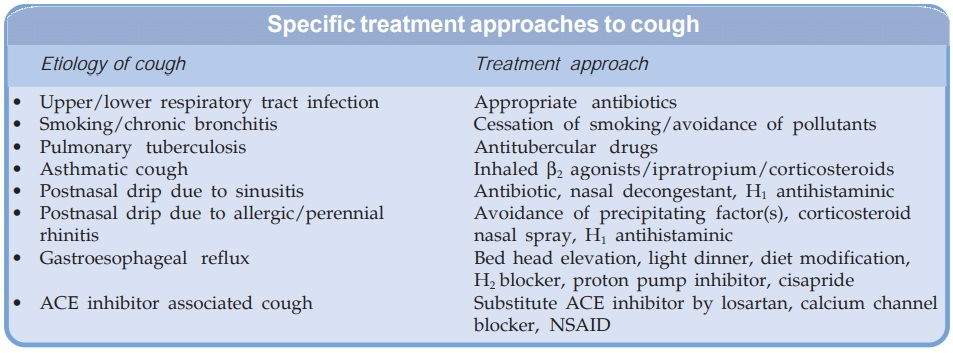Demulcents and Expectorants
| Home | | Pharmacology |Chapter: Essential pharmacology : Drugs for Cough and Bronchial Asthma
Pharyngeal demulcents sooth the throat and reduce afferent impulses from the inflamed/ irritated pharyngeal mucosa, thus provide symptomatic relief in dry cough arising from throat.
DEMULCENTS AND EXPECTORANTS
Pharyngeal demulcents sooth the throat and reduce afferent impulses from the inflamed/ irritated pharyngeal mucosa, thus provide symptomatic relief in dry cough arising from throat.
Expectorants (Mucokinetics) are drugs believed to increase bronchial secretion or reduce its viscosity, facilitating its removal by coughing.
Sodium and potassium citrate are considered to increase bronchial secretion by salt action. Potassium iodide is secreted by bronchial glands and can irritate the airway mucosa. Prolonged use can affect thyroid function and produce iodism. It is rarely used now. Guaiphenesin, vasaka, tolu balsum are plant products which are supposed to enhance bronchial secretion and mucociliary function while being secreted by tracheobronchial glands. Ammonium salts are nauseating—reflexly increase respiratory secretions. A variety of expectorant formulations containing an assortment of the above ingredients, often in combination with antitussives/antihistaminics are marketed and briskly promoted, but objective evidence of efficacy of these is nonconclusive.

Mucolytics
Bromhexine
A derivative of the alkaloid vasicine obtained from Adhatoda vasica (Vasaka), is a potent mucolytic and mucokinetic, capable of inducing thin copious bronchial secretion. It depolymerises mucopolysaccharides directly as well as by liberating lysosomal enzymes— network of fibres in tenacious sputum is broken. It is particularly useful if mucus plugs are present. Side effects are rhinorrhoea and lacrimation, gastric irritation, hypersensitivity.
Dose: adults 8 mg TDS, children 1–5 years 4 mg BD, 5–10 years 4 mg TDS.
BROMHEXINE 8 mg tablet, 4 mg/5 ml elixir.
Ambroxol A metabolite of bromhexine having similar mucolytic action, uses and side effects.
Dose: 15–30 mg TDS.
AMBRIL, AMBROLITE, AMBRODIL, MUCOLITE 30 mg tab, 30 mg/5 ml liquid, 7.5 mg/ml drops.
Acetylcysteine It opens disulfide bonds in mucoproteins present in sputum—makes it less viscid, but has to be administered directly into the respiratory tract.
MUCOMIX 200 mg/ml inj in 1,2,5 ml amps; injectable solution may be nebulized/instilled through trachiostomy tube.
Carbocisteine It liquefies viscid sputum in the same way as acetylcysteine and is administered orally (250–750 mg TDS). Some patients of chronic bronchitis have been shown to benefit. Side effects are g.i. irritation and rashes.
MUCODYNE 375 mg cap, 250 mg/5 ml syr.
It is available in combination with amoxicillin or cephalexin for treatment of bronchitis, bronchiectasis, sinusitis, etc.
CARBOMOX: Carbocisteine 150 mg + amoxicillin 250 or 500 mg caps. CARBICEF: Carbocisteine 150 mg + cephalexin 250 or 500 mg caps.
